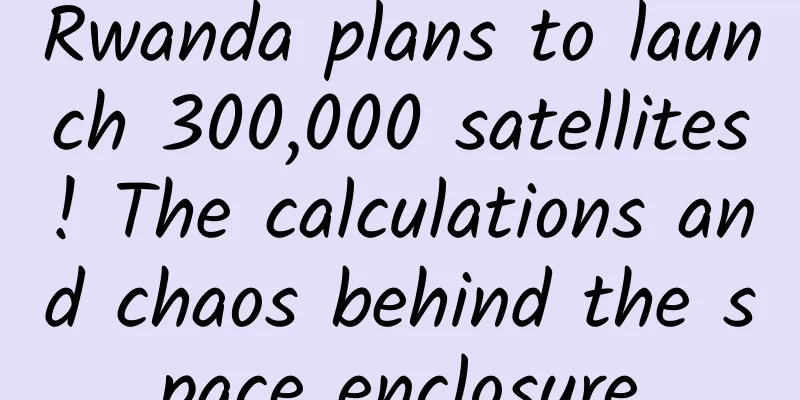It’s the Year of the Rabbit! These famous Chinese science and technology scenes are worth being proud of

|
◎ Sun Yu, intern reporter of Science and Technology Daily Since Shenfei was established A breakthrough in superconductivity research Starting from the Science and Technology Special Envoy System The launch of Tiangong-1 … Every Year of the Rabbit Scientific and technological talents have made great achievements Let China's science and technology "rabbit" take off Jade Rabbit Welcomes the New Year What historical memories did it trigger? Let’s review together! 1951: Shenyang Aircraft Corporation, the "cradle of Chinese fighter aircraft", was established 1951 was the first Year of the Rabbit after the founding of New China. On June 29 of that year, the first fighter aircraft manufacturing plant in New China was established in Shenyang, Liaoning Province, code-named State-owned Plant 112. The current name of the State-owned Factory 112 is Aviation Industry Shenyang Aircraft Industry (Group) Co., Ltd., but people are more familiar with its abbreviation - Shenfei. 72 years ago, in order to meet the needs of the War to Resist U.S. Aggression and Aid Korea and the construction of the air force, the young republic decided to use 6 billion catties of millet to speed up the creation of its own aviation industry. At that time, 6 billion catties of millet was equivalent to RMB 600 million. Workers at Shenfei are producing aircraft (photographed around the 1970s). Source: Xinhua News Agency In 1953, China began to implement its first "Five-Year Plan", and Factory 112 was listed as one of the 156 key projects assisted by the Soviet Union. Outstanding talents from all over the country worked hard here, relying on the unimaginable pioneering and fighting spirit, and successfully trial-produced China's first jet fighter, the J-5 aircraft, on July 19, 1956. Since then, one achievement after another was born here, including the first supersonic jet fighter, the first high-altitude high-speed jet fighter, the first carrier-based fighter, etc. Shenyang Aircraft Corporation is also known as the "cradle of Chinese fighter jets." At present, Shenfei has grown into a large modern aircraft manufacturing enterprise with aviation product manufacturing as its core business. It integrates scientific research, production, testing, flight testing, and service guarantee. It not only explores new applications of digital and intelligent technologies in fighter jets, but also provides reliable and comfortable components for civil airliners. In pursuit of the dream of the blue sky, Shenfei always maintains the most high-spirited attitude, witnessing and creating greater miracles in the struggle! 1975: Successfully launched a recoverable remote sensing satellite On November 26, 1975, my country successfully launched a recoverable remote sensing artificial earth satellite. After the satellite was operating normally, it returned to the ground as planned. It marked that my country became the third country after the United States and the Soviet Union to master satellite recovery technology, and made a new breakthrough in the research of aerospace technology. This artificial earth satellite is my country's first recoverable remote sensing satellite. It was lifted by the Long March 2 carrier rocket and launched from the Jiuquan Satellite Launch Center. On November 26, 1975, my country successfully launched a recoverable remote sensing artificial earth satellite. Image source: China Aerospace Science and Technology Corporation On October 4, 1957, the Soviet Union launched the world's first artificial satellite, ushering in a new era of space exploration. The United States followed suit and launched the artificial satellite Explorer 1 on January 31, 1958. Since then, the United States and the Soviet Union have been competing over space technology. In order to break the monopoly of the world's aerospace powers on space technology, developing recoverable satellites and mastering satellite recovery technology have become important issues that my country must prioritize. Faced with severe challenges, scientific and technological workers began to tackle them. They worked together and united to make sure that the satellite could "go up and come back"! After years of research, the satellite was successfully launched on November 26, 1975. After traveling in space, it returned to the ground as planned, completing the entire process of going up to the sky, entering orbit, remote sensing, and returning. Since 1975, the recoverable satellites launched by my country have played an irreplaceable role in promoting land surveys, resource exploration, material research, life sciences, and improving the quality of crops. 1987: my country achieved a major breakthrough in superconductivity research Superconductivity, whose full name is superconductivity, refers to the phenomenon that the resistance of certain materials suddenly disappears when the temperature drops below a certain critical value (i.e., the superconducting critical temperature). Materials with this property are called superconductors, which have great application potential in information communication, biomedicine, aerospace and other fields. Physicist McMillan believes that the critical temperature of superconductivity is unlikely to exceed 40K (about minus 233 degrees Celsius), so 40K is called the "McMillan limit." The superconductivity critical temperature is extremely low, which limits its widespread application. Finding high-temperature superconductors has become the dream of scientists around the world. In early 1986, European scientists Bednorz and Muller discovered that copper oxide superconductors, with copper as the key superconducting element, had a transition temperature of 35K. In September of that year, Zhao Zhongxian, then an associate researcher at the Institute of Physics, Chinese Academy of Sciences, read the article published by Bednorz and Muller and fell into a long period of thinking. He believed that Muller's idea made sense, that is, to make full use of the instability of the material structure to achieve high-temperature superconductivity. In mid-October, he and other researchers at the Institute of Physics began to study copper oxide superconductors. Zhao Zhongxian introduces the old laboratory at the Institute of Physics of the Chinese Academy of Sciences. Source: Xinhua News Agency In February 1987, Zhao Zhongxian and his collaborators discovered a superconducting transition in yttrium barium copper oxide with an initial transition temperature of more than 100K, a midpoint transition temperature of 92.8K, and a zero resistance temperature of 78.5K. They independently produced a "yttrium barium copper oxide liquid nitrogen temperature zone superconductor" with a critical temperature of 93K, using cheap and easy-to-use liquid nitrogen to replace expensive liquid helium to achieve superconductivity. Prior to this, superconductivity research around the world used liquid helium to make superconductors reach the transition temperature. Zhao Zhongxian's team used liquid nitrogen to reach the superconductivity transition temperature. This method opened up new horizons for superconductivity research and greatly facilitated and accelerated high-temperature superconductivity research around the world. 1999: The “Special Dispatchers” system was launched, and the “Two Bombs and One Satellite Medal of Merit” was awarded At the end of 1998, Wu Jingcai, who had just returned from studying abroad, received a special mission: to serve as assistant to the mayor of Wangtai Town, Yanping, Nanping, and to be stationed in Xihou Village to promote and guide agricultural technology. No one expected that his assignment would be the beginning of a "systemic revolution" in northern Fujian. In early 1999, the first batch of 225 science and technology commissioners from Nanping City, Fujian Province went to the villages to serve the farmers. Wu Jingcai became the first agricultural science and technology personnel stationed in the village and was affectionately called "No. 1 Science and Technology Commissioner" by the villagers. Wu Jingcai (right) discusses the planting methods of spring fresh cassava with Chen Shoukan, a senior agronomist of the Sanming Comprehensive Experimental Station of the National Cassava Industry Technology System. Source: Fujian Daily For more than 20 years, batches of science and technology commissioners have been working in the mountains and forests, farming in the fields, writing papers on the land of the motherland, and becoming leaders in poverty alleviation and prosperity. At present, they continue to contribute to the comprehensive promotion of rural revitalization in the vast countryside. On September 18, 1999, the magnificent Great Hall of the People welcomed a grand conference of science and technology experts. At the conference, the Party Central Committee, the State Council, and the Central Military Commission decided to commend 23 science and technology experts who made outstanding contributions to the development of the "two bombs and one satellite" that year, and awarded Yu Min, Wang Daheng, Wang Xiji, Zhu Guangya, Sun Jiadong, Ren Xinmin, Wu Ziliang, Chen Fangyun, Chen Nengkuan, Yang Jiachi, Zhou Guangzhao, Qian Xuesen, Tu Shou'e, Huang Weilu, Cheng Kaijia, and Peng Huanwu the "Two Bombs and One Satellite Medal of Merit", and posthumously awarded Wang Ganchang, Deng Jiaxian, Zhao Jiuzhang, Yao Tongbin, Qian Ji, Qian Sanqiang, and Guo Yonghuai the "Two Bombs and One Satellite Medal of Merit". A conference to commend scientific and technological experts who have made outstanding contributions to the development of the "two bombs and one satellite". Image source: China Aerospace Science and Technology Corporation Doing earth-shaking things and being anonymous. This group of lovely people successfully developed the "two bombs and one satellite" under the conditions of very weak material and technical foundation, creating valuable experience for us to achieve a leap in technological development. Great undertakings create great spirits, and their names and achievements will be remembered forever in history! 2011: Tiangong-1 launched into space September 29, 2011, is a special day that Chinese astronauts will never forget. On that day, accompanied by the rumble of the earth, the Long March 2F carrier rocket launched the Tiangong-1 target spacecraft into space, and the Chinese people's space dream once again became a reality. Tiangong-1 is China's first target spacecraft, consisting of an experimental module and a resource module. Its launch marks that China has its own space laboratory and the first "Chinese home" in the vast universe. On September 29, 2011, China launched the Tiangong-1 target spacecraft into space using the Long March 2F carrier rocket at the Jiuquan Satellite Launch Center. Image source: Xinhua News Agency, Xinhua News Agency reporter Wang Jianmin More than a month later, Shenzhou 8 set off from the Jiuquan Satellite Launch Center and embarked on a "journey to meet" with Tiangong 1. After two days of pursuit and five orbit changes, it successfully carried out my country's first space rendezvous and docking with Tiangong 1 in the early morning of November 3, leaving behind a romantic "space kiss". After that, Tiangong-1 welcomed Shenzhou-9 astronauts Jing Haipeng, Liu Wang, and Liu Yang, and also became the classroom for my country's first "space class"... It rendezvoused and docked with Shenzhou-8, -9, and -10 spacecraft six times, completed all the established tasks, and made a significant contribution to the development of China's manned space program. On March 16, 2016, Tiangong-1 officially terminated its data service, fully completing its historical mission. In 2022, the Chinese space station will be fully completed. But this is not the end. The vast sea of stars is waiting for Chinese astronauts to continue exploring. New Year Wish our country's science and technology Rabbit is making rapid progress Source: Science and Technology Daily, Xinhua News Agency, People's Daily, CCTV.com, Qiushi.com, Wenhui Daily, etc. |
<<: Drilling for combustible ice at 2,000 meters deep sea, "Manatee II" is really awesome!
Recommend
How much does Baidu AiPurchasing cost per year? How much does Baidu AiPurchase charge?
Baidu Ai Purchasing is currently in its bonus per...
There are various optical illusions. What is the point of studying them?
We need to study not only human illusions, but al...
4GB RAM for only 899 yuan. How does 360 Vizza create the most sincere thousand-yuan phone?
For smartphones, entry-level thousand-yuan phones...
Experience in operating knowledge accounts with millions of followers on Douyin
2021 is already half over. Where are the opportun...
How to get users to actively download your product?
What does scenario-based app promotion mean? It i...
Eating too much for a long time is more harmful to your body than you think (not just making you fat)!
People always eat too much easily, sometimes beca...
If your arm is blue after having your blood drawn as if you were beaten, it’s probably because you pressed the wrong button!
I believe you must have had such an experience of...
E-commerce short video pyramid creation method (Part 1)
Many Douyin merchants always face the dilemma of ...
A new game restriction calendar for minors is available! How can parents effectively manage their children’s internet and gaming time during holidays?
Winter vacation is here Game platforms have relea...
How far is generalized AI from true “artificial intelligence”?
Once upon a time, AI (artificial intelligence) be...
A foreign programmer is really good at playing. He used this technology to trick everyone in the company...
[51CTO.com Quick Translation] I like to use Photo...
Detail page copywriting template with conversion rate over 85%!
Copywriting has always been a very popular job : ...
2020 Zhihu traffic secrets, the most comprehensive explanation on the entire network
I wonder what promotion and traffic generation me...
New research: 50 years of tobacco control has saved 3.85 million lives and extended life expectancy by 19.8 years per person
Recently, a major study published in the Journal ...









